Edinburgh Kiltmakers Academy: Saving An Endangered Craft
One might say that tartan runs through my veins! I’ve always had a deep and personal connection to the Scottish Arts. Growing up with a bass drumming dad, I was surrounded by kilts, bagpipes and Highland Games. From a very young age, I was completely mesmerized and hooked. Since the age of three, being fitted for my own highland dancing kilt became a frequent experience. As I grew, my existing kilt would be altered to better fit me. Once outgrown, a new kilt was handcrafted and future proofed. By adding a large hem, one kilt could last much longer during growth spurts. The Purple Milne tartan became my signature, and to this day, holds an immense amount of sentimental value.
Having spent most summers wearing a kilt, along with my evolving passion for sewing and weaving, it dawned on me one day that Kiltmaking was the perfect combination of all of my favourite things – Scotland, sewing, fashion and history. What a spectacular skill to learn and pursue. With some research, I happily stumbled upon the Edinburgh Kiltmakers Academy.
Founded by Gordon Nicolson Kiltmakers, the Academy is dedicated to providing expert instruction to new generations of Kiltmakers. After completing an interview and skills test, I was accepted into the Academy and was off to Scotland to take part in their six month intensive course.
The course is made up of both hands-on sewing and written technical work. Each student creates a personal and in-depth diary of their experience. Every kilt made during the course is documented step-by-step with drawings and photos included.
The course begins with the creation of a mock kilt – a miniature kilt with the ‘guts’ left exposed. The mock kilt becomes a valuable visual tool for future reference. Once complete, 6 additional kilts are sewn with each one highlighting different skills necessary to fulfill the course requirements.
A kilt is made up of 8-10 yards of cloth, that is intricately sewn by hand. Running stitch, backstitch, and hemming stitch are just a few of the classic stitches used to transform a flat piece of cloth into a wearable piece of craftsmanship. One of my favourite stitches is the ‘pad stitch’. This stitch is a tailor’s technique used to attach the inner canvas to the kilt for stability. Although eventually covered and hidden from view, these stitches are an integral part of the creation of a kilt.
The course is set up to provide one in class day of learning, followed by a week of intense homework. Day in and day out, I spent upwards of ten hours a day hand sewing. On my train trips to Edinburgh, there came a point I was carrying 31 yards of tartan at one time! I’m sure it was quite a sight to see me hauling an extra large tote bag filled to the brim with tartan, my sewing kit, a yard stick, my lunch bag and my large purse along the Royal Mile. Haha! Although the course was intense, the completion of each and every kilt, purely by hand, made the process so overwhelmingly gratifying.
Towards the end of the course, a very special class trip was taken to the Lochcarron Weaving Mill, in Selkirk. Visiting the Mill gave me an even greater admiration for tartan and its history. Thousands of tartans exist and each has one has its own story to tell.
I have always appreciated the art of Kiltmaking, but little did I know just how much work goes into each one.
Thousands of hand sewn stitches are put in with blood, sweat and tears. To create a garment out of one continuous piece of cloth is such a technical and rewarding process.
Nine months after completing the course, with all of my hand stitched kilts reviewed and my 50,000 word diary assessed, I am proud to say I am officially a Qualified Kiltmaker! I am truly grateful for my time spent at the Edinburgh Kiltmakers Academy. Learning from such highly skilled and passionate makers, in the capital city of Scotland, was a dream come true.
In 2021, Kiltmaking was unfortunately added to the Red List of Endangered Crafts. Keeping the art of Kiltmaking alive is incredibly important to me. With a greater knowledge of this craft, more hands sewing tartan, and a wider outreach of keen individuals, I hope Kiltmaking will again become a well known trade as it was many centuries ago.
Thanks to The Fabric Store, I am able to share my story and hope that it inspires even one of you to reach out and connect with the Academy. It is vital that the knowledge and skills be passed on for generations to come.
May Kiltmaking live on forever!


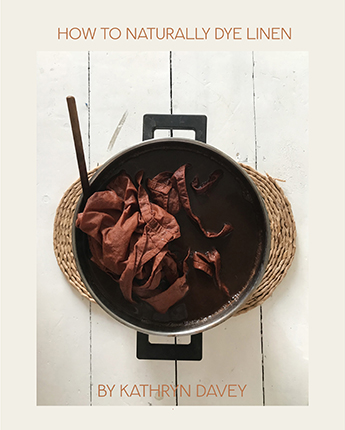
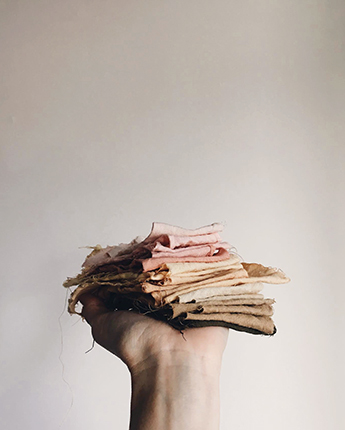

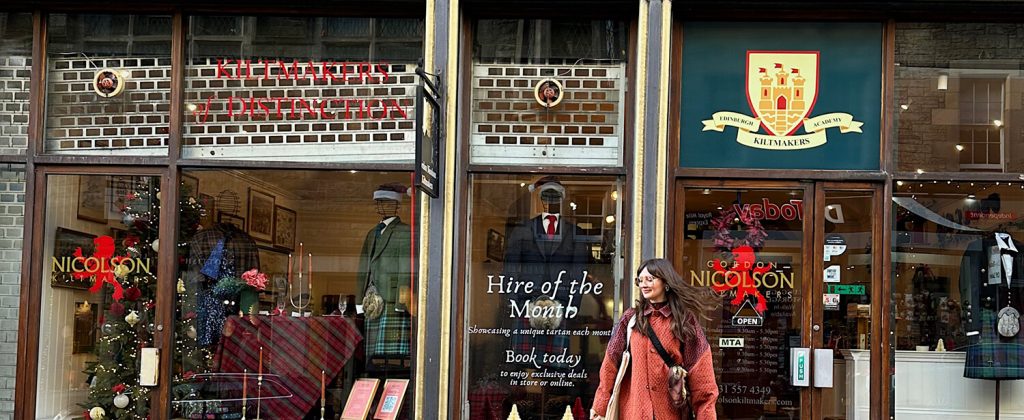
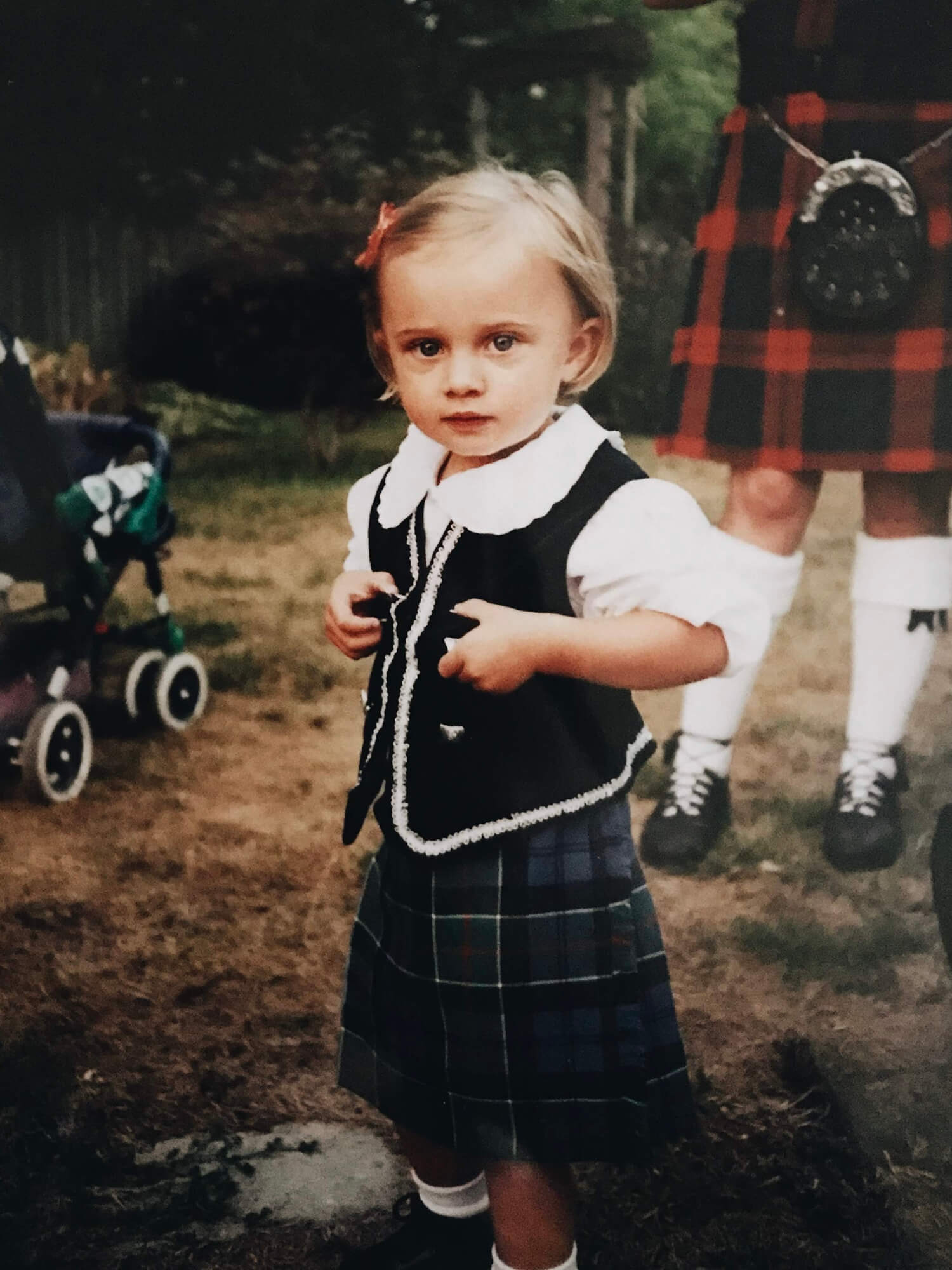
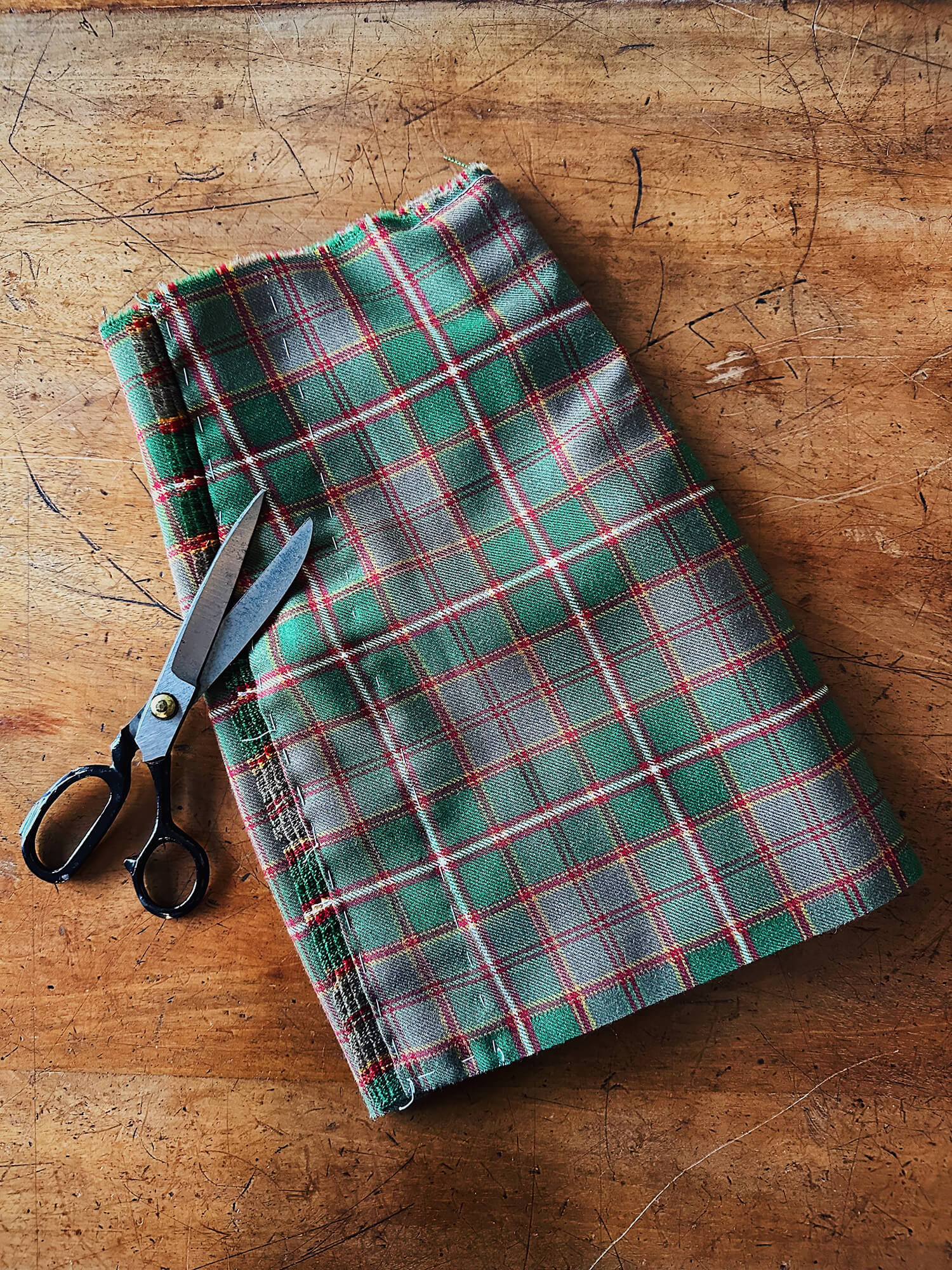
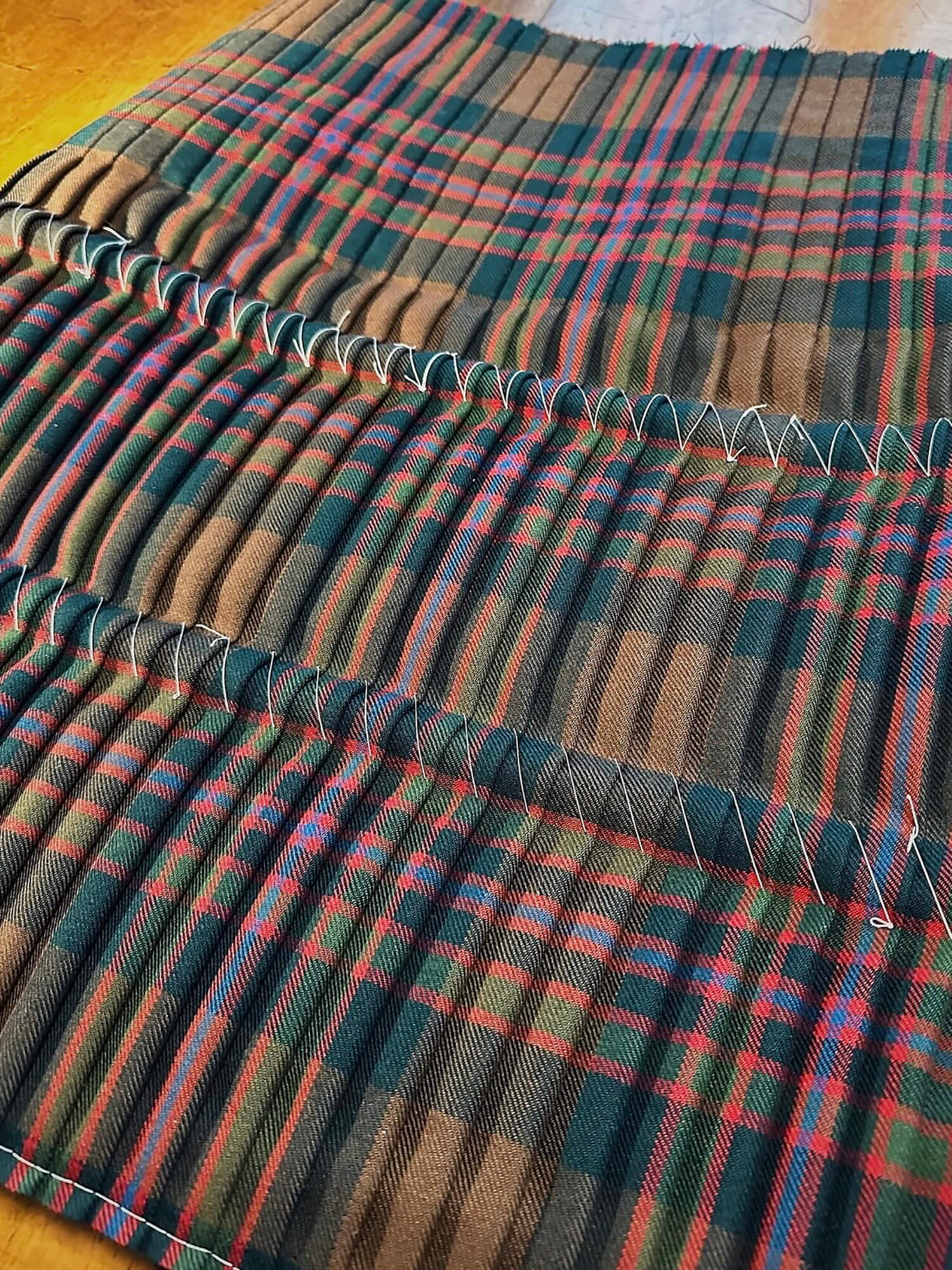
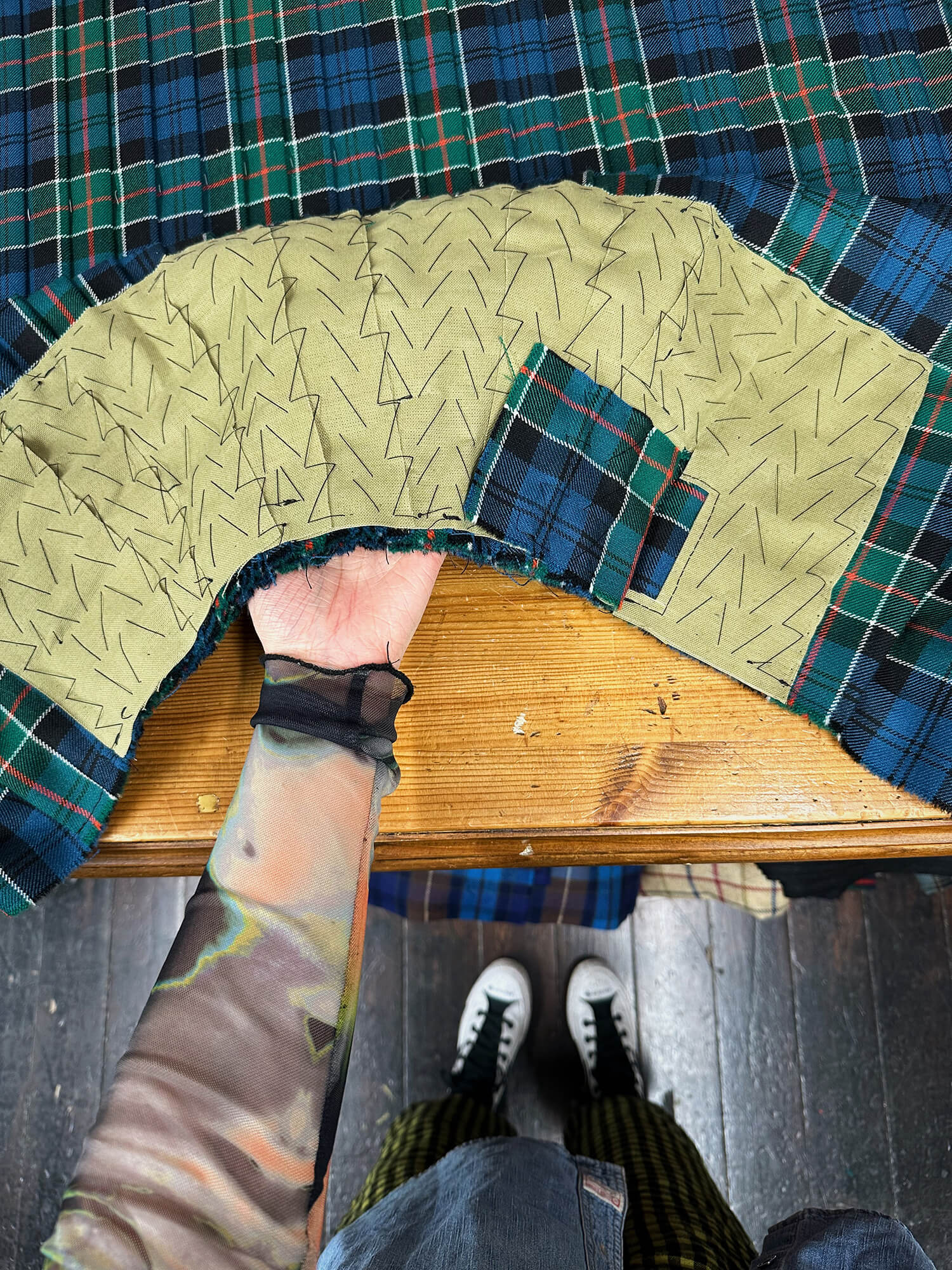
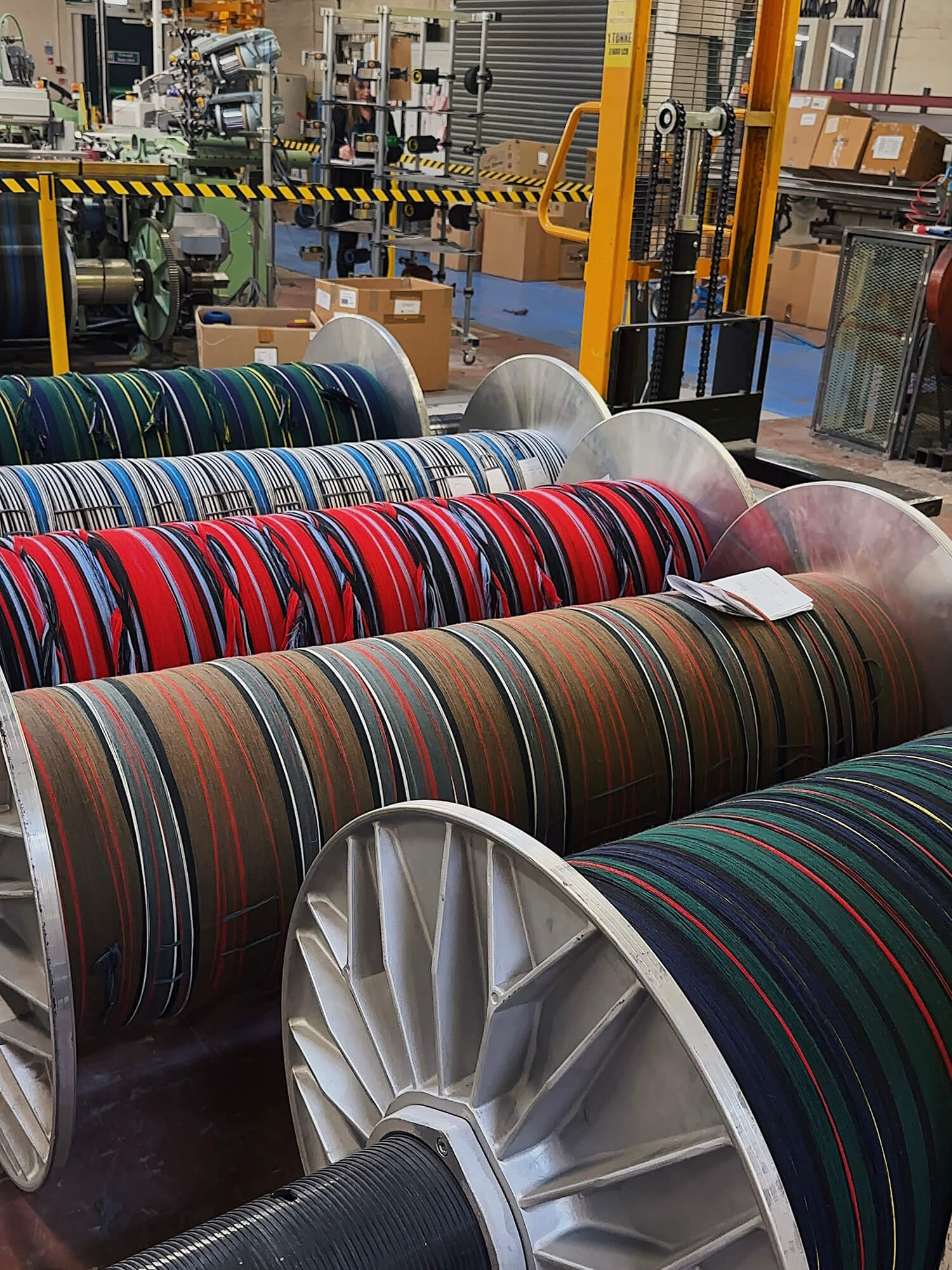
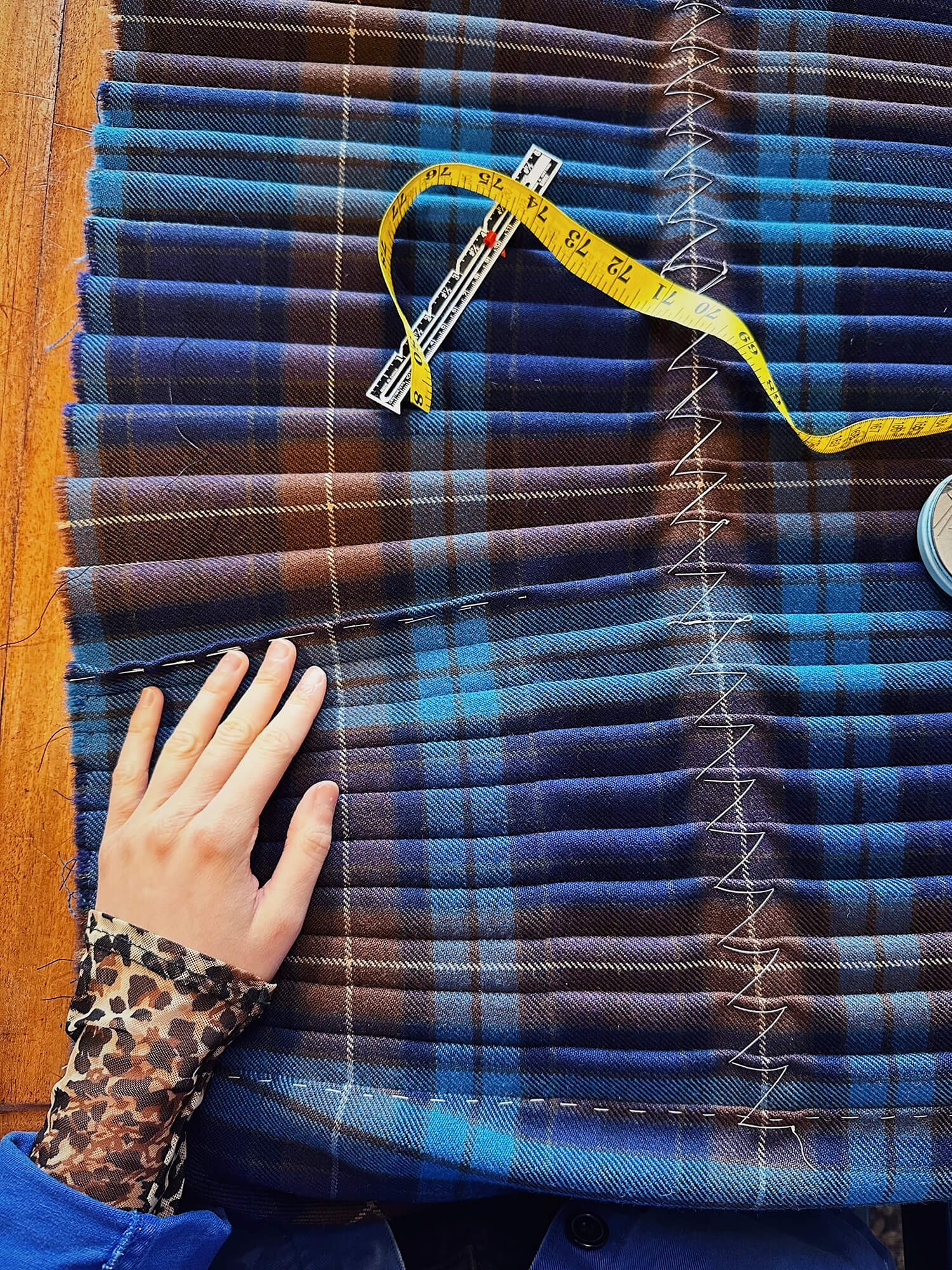
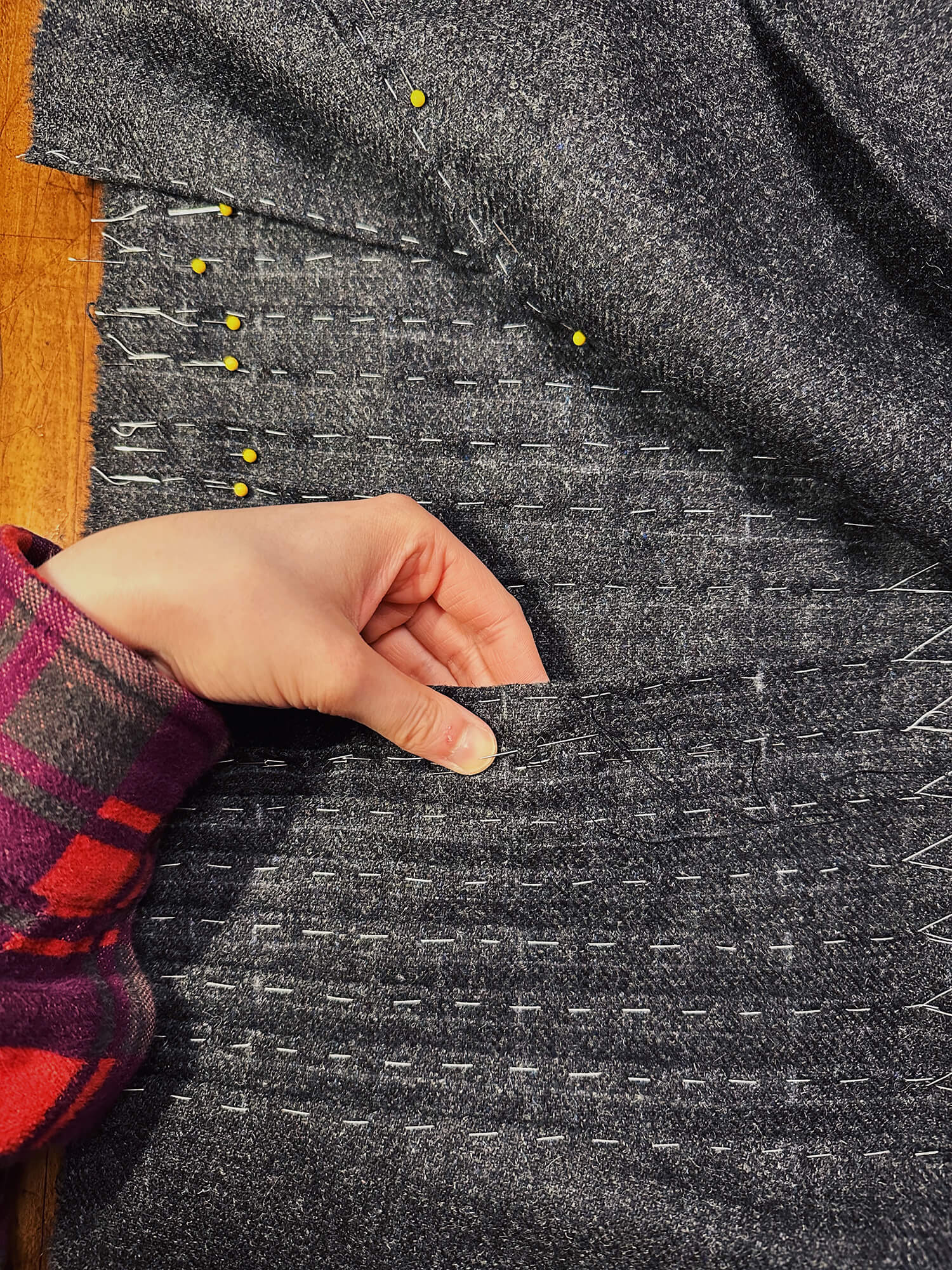
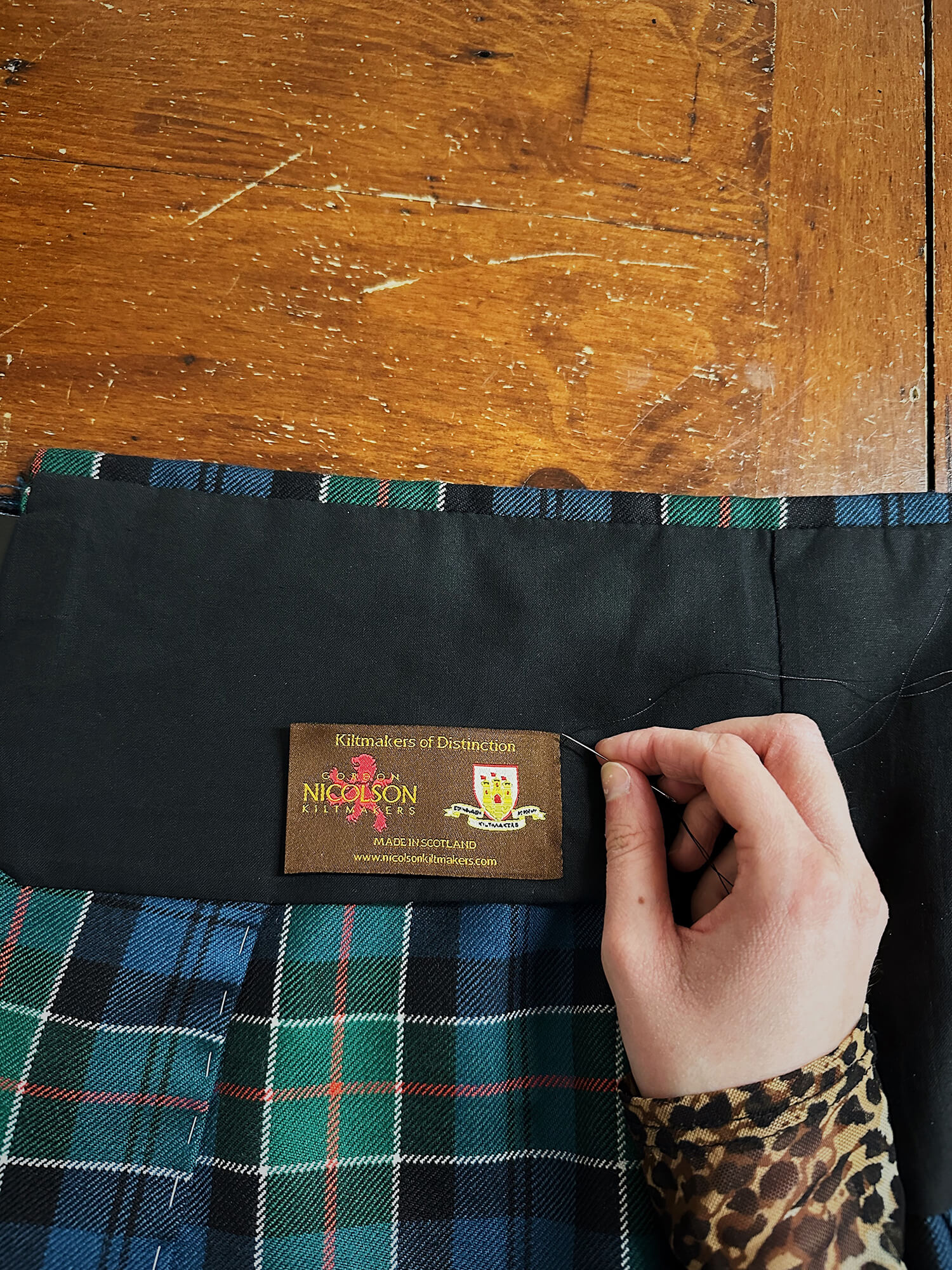
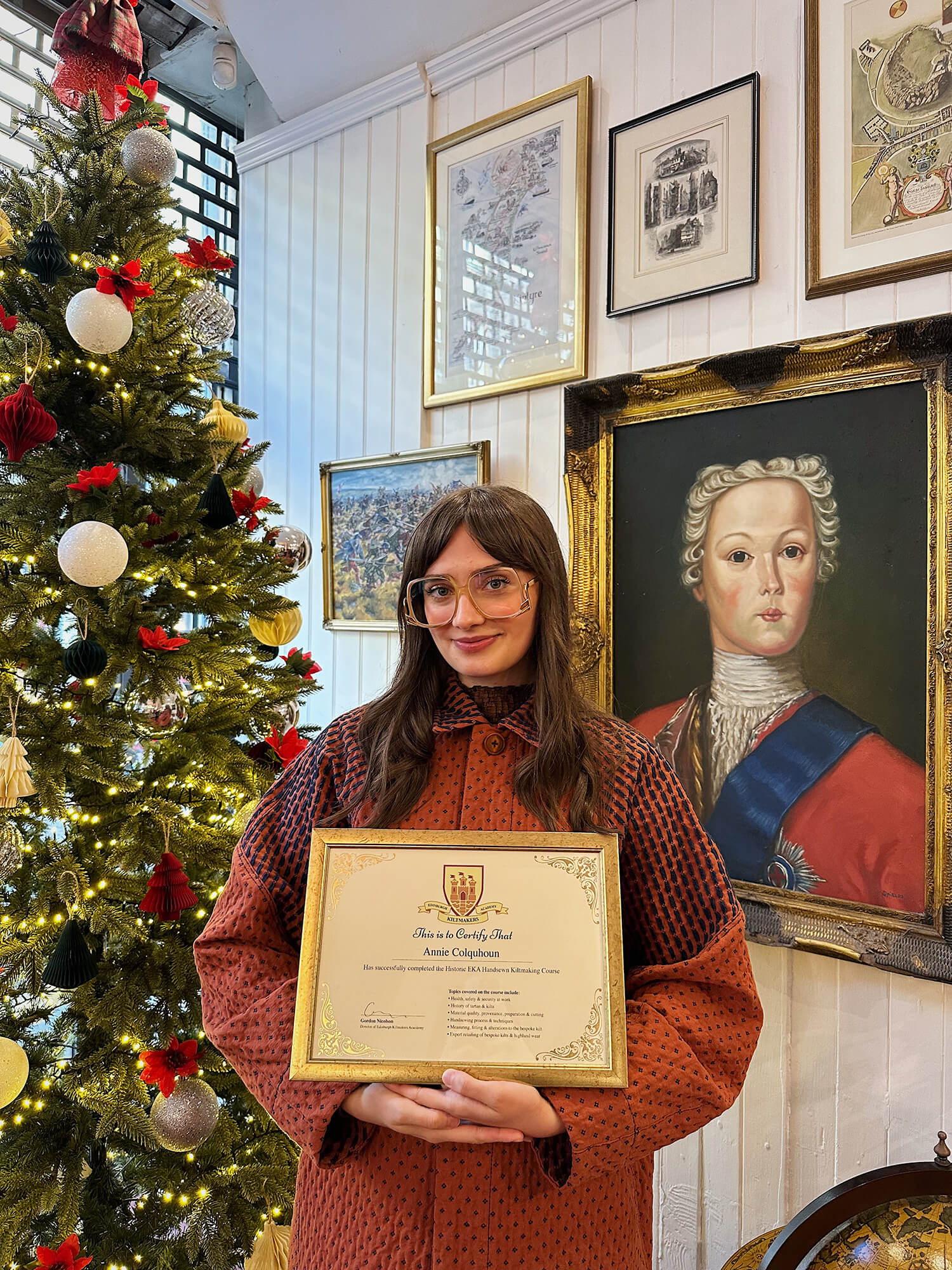

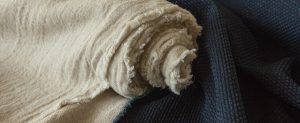
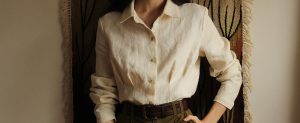
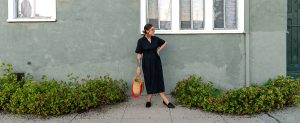
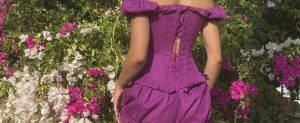




































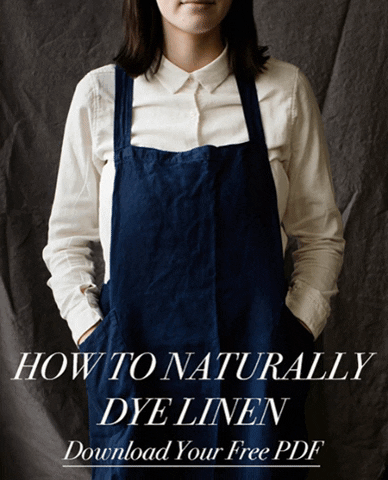


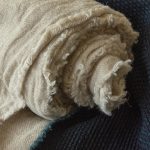

15 Comments
Liisa May
I loved this article. I am a retired editor who can read for content quickly. I slowed down to savor this. My family are nomads of the first order. We are said to be related to a Scots warlord who was killed on a road during a battle. The name connected to us is McCord. I suspect that my wandering ancestors crossed paths with Scots and picked up some of the DNA, black Scots my dad said. Euphemism in some parts of US for half-blood Native American. Anyway, before learning of my DNA links, I love kilts like architects love beautifully designed buildings. I am inspired to sharpen my hand-sewing skills, and take the course. Good going Annie Pickles.
Liisa May
Annie, can you tell us about your coat?
Annie Colquhoun
Liisa! Thank you so much for your lovely comment. Wow! What incredibly interesting family history. I resonate very much with admiring kilts in the way an architect loves a building. I do hope you’ll look into the course and take on the challenge someday! It truly changed my life!
As for the jacket – it is the Daughter Judy Thompson coat pattern. Made from incredible thrifted fabric!
Best wishes to you!
Janet Kemper
I loved reading this! I had no idea about the academy & did not know all the hard work and stitches that went into to kilt making. As my family has some Scottish roots this really was so cool to hear about.
Annie Colquhoun
Aw thank you so much Janet! The thousands of stitches in just one kilt, amaze me every time! Thank you for reading!
Carla Rollins
One of my first projects with a new loom was to weave a family tartan. My roots are Fife and Paisley. I wish I had known about this school in Edinburgh as I spent a bit of time there. I almost took a job as a weaver in a historic place I bumped into in the Highlands but my family was here in the US expecting me to come back. Love them all and about due to go back. As a weaver the precision of counting sounds similar to the hand stitching of assembly. Thanks for this insight to such beautifully constructed cloth.
Annie Colquhoun
Carla! Wowie! Weaving and Kiltmaking is so incredibly intertwined. As a newbie weaver myself, it definitely gave me an even greater appreciation for the woven cloth itself before the process of a kilt begins. I’m sorry to hear you didn’t take the job, but what an amazing opportunity that must have been. Thank you for sharing your story!
Kathy Waters
What a great article! My great-grandparents came from Scotland, last name was Thorburn. Long long time ago, I had a kilt that I wore until I literally outgrew it. So, I made one but out grew it too. I rather doubt my kilt was anywhere near the quality of yours! Thank you for the inspirational article!!
Annie Colquhoun
Aww I love this. Thank you for taking the time to read, Kathy!
Nancy Gruber
Absolutely fascinating! I had no idea so much handwork goes into making an authentic kilt, and out of a single piece of cloth! Thank you for this article. Even though there is no family connection to Scotland, I love all things Scottish ever since reading The Witch of the Glens as a young girl.
Annie Colquhoun
Aww this is so sweet. Until taking the course, I also didn’t quite know how much work went into one kilt. Kiltmaking is a true art form. Thank you for reading, Nancy!
Linda Kriss
Wow! I loved this article and your journey. My father was half Scottish and I have always been drawn to the history of that part of the world.
Annie Colquhoun
Aw thank you for your kind words, Linda! Scotland is the most magical place!
Andrea Matters
I enjoyed seeing the glimpses of Colquhoun tartan in your photos! That is my tartan as well, as a Kilpatrick.
Annie Colquhoun
Ahhh! We must be related in someway or another. Thanks for reading, Andrea!